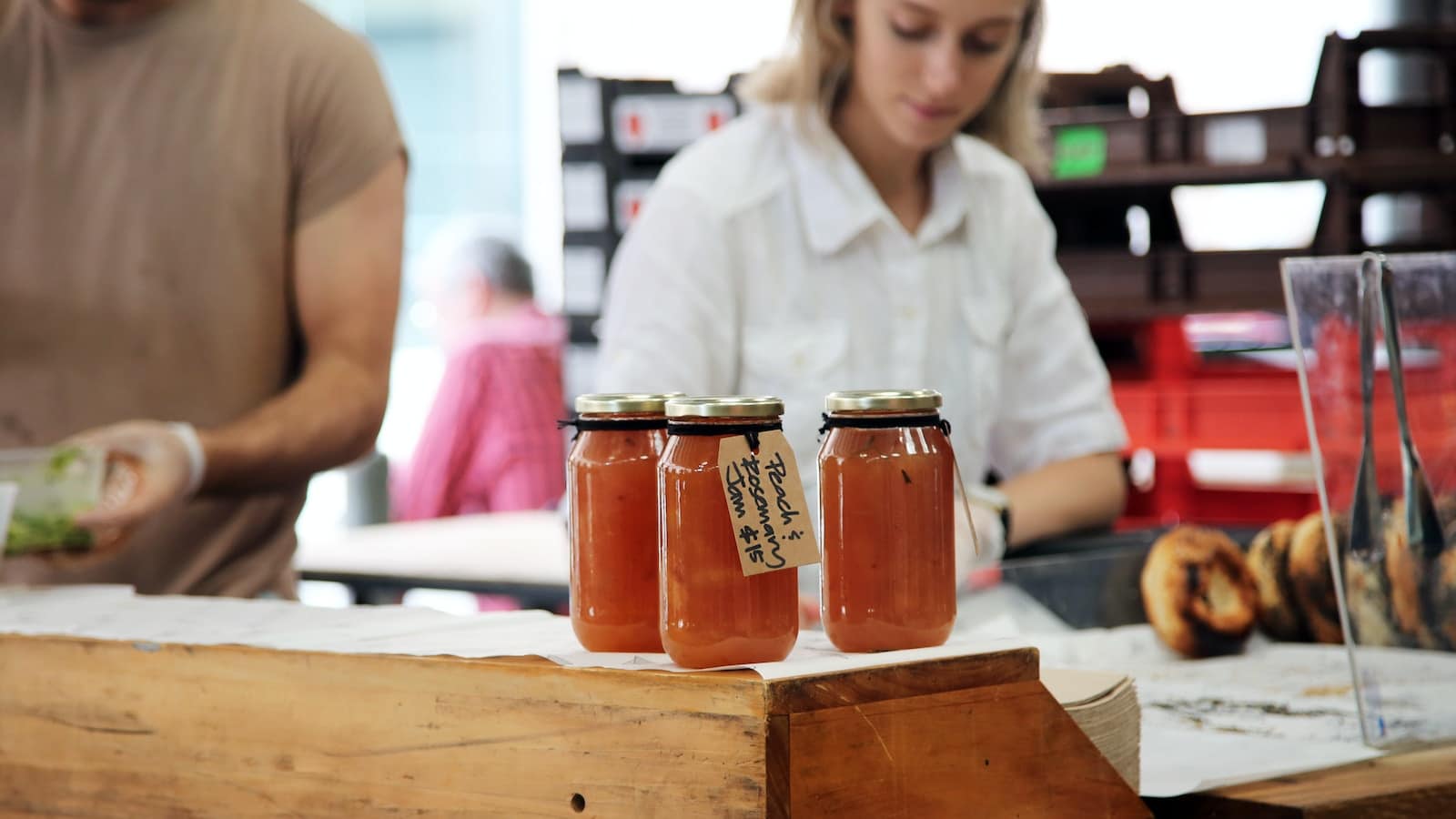What are the best tips for making homemade jams?

 |
November 27, 2023
|
November 27, 2023
As the season of harvest rolls in, fruit-laden trees and bushes present a delightful opportunity to indulge in the joyous process of making homemade jams. The time-tested tradition of preserving the bounty of summer’s fruits in sugar and stirring a pot filled with sweet, bubbling nectar has a certain charm that’s hard to resist.
In this article, we delve into the art of making jams – the do’s and don’ts, tips and tricks, and some mouth-watering recipes that will make your jam-making experience a resounding success. So, stay with us as we embark on this sweet journey.
En parallèle : What are the best strategies for meal prepping?
Selecting the Best Fruits for Your Jam
Before diving into the process of making jams, it’s crucial to select the right fruits. Not all fruits are created equal when it comes to jam-making. Some yield a better texture, while some have a pectin level that lends itself naturally to the jamming process.
When shopping for fruits, ensure they are ripe but not overripe. Overripe fruits can affect the set of your jam, resulting in a runny consistency. Berries, apples, pears and plums are great choices that are high in pectin. Citrus fruits, especially lemons, also add a lovely tang to your jam and help in setting it.
Cela peut vous intéresser : How to bake with alternative sugars and flours?
A great tip when making jam is to mix your fruits. Combining fruits that are high in pectin with those low in pectin can lead to a well-balanced and flavorful jam.
The Magic Ingredient: Pectin
Pectin, a naturally occurring soluble fiber present in many fruits, is what gives jams their characteristic gel-like consistency. When combined with sugar and acid (usually in the form of lemon juice), pectin will set your jam, making it spreadable and luscious.
Some fruits have higher pectin levels than others. If you’re using low-pectin fruits like strawberries or peaches, you might need to add commercial pectin to achieve the desired consistency. However, you can also increase the pectin content by adding high-pectin fruits like apples or lemons to your recipe.
The Right Amount of Sugar
Sugar plays a crucial role in jam making. It not only sweetens your jam but also helps in preserving it. However, adding too much sugar can make your jam overly sweet and mask the natural flavors of the fruit.
A good rule of thumb is to use three-quarters of a cup of sugar for every cup of fruit. This ratio can be adjusted according to the sweetness of the fruit and your personal preference.
The Importance of Cooking Time
The cooking time is crucial when making homemade jams. Cooking the jam for too long can result in a stiff, overly sweet product, while undercooking can lead to a runny consistency.
As a general rule, most jams need to be cooked for about 10-20 minutes. The jelly stage, or the point when the jam is ready, can be tested by placing a spoonful of jam on a cold plate. If it wrinkles when you push it with your finger, the jam is set.
Sterilizing Your Jars
There’s a certain satisfaction in seeing your homemade jams lined up in glass jars. But, before you get to that stage, it’s crucial to sterilize your jars properly. Any bacteria or yeasts present in the jars can spoil your jam.
To sterilize your jars, wash them in hot, soapy water, rinse thoroughly, and then place them in a pot of boiling water for 10 minutes. Once sterlized, carefully remove the jars using tongs and let them air-dry on a clean towel.
Recipes to Get You Started
Now that you’re armed with all the tips and know-hows of jam making, it’s time to put them into practice. Here are a few easy and delicious recipes to get you started:
-
Berry Bonanza Jam: Combine 4 cups of mixed berries (like raspberries, blueberries, and strawberries), 3 cups of sugar, and the juice of 1 lemon in a large pot. Bring the mixture to a boil and cook for 15-20 minutes, stirring frequently.
-
Pear and Ginger Jam: Peel and chop 4 cups of pears and combine them with 3 cups of sugar, the juice of 1 lemon, and 2 tablespoons of grated fresh ginger in a pot. Cook on medium heat for 20-25 minutes, stirring often.
-
Peach and Vanilla Jam: Combine 4 cups of peeled and chopped peaches, 3 cups of sugar, the juice of 1 lemon, and 1 split vanilla bean in a pot. Boil the mixture and cook for 15-20 minutes, stirring frequently.
Remember, the secret to making great homemade jams is patience and practice. So, don’t be disheartened if your first few attempts don’t turn out perfect. Keep experimenting with different kinds of fruits, adjust the sugar and pectin levels according to your liking, and soon, you’ll master the art of jam-making.
Jam Making: Common Mistakes and Solutions
While making jam at home allows you control over the quality and quantity of ingredients, there are several common pitfalls that you should be aware of. These can range from the jam not setting, to the development of mold, or the jam tasting too sweet or too sour. By understanding these potential issues, you can take steps to prevent them and ensure your jam turns out just right.
Firstly, jam not setting is a common issue and can result from a combination of factors such as insufficient pectin, inadequate cooking time, or too little acid (lemon juice). To prevent this, ensure you’re using pectin-rich fruits, cooking the jam to the jelly stage (the setting point), and adding enough lemon juice.
Next, the development of mold on homemade jams can be a result of unsterilized jam jars or lids, or improper sealing. Proper sterilization of your jars and lids by immersing them in boiling water for at least 10 minutes, and ensuring the jam jars are sealed properly while the jam is still hot, will help avoid this problem.
Lastly, if your jam tastes too sweet or too sour, it’s likely due to an imbalance between the fruit and sugar. Maintaining the right ratio of fruit to sugar is crucial for a well-balanced flavor. Usually, three-quarters of a cup of granulated sugar for every cup of fruit will yield a tasty jam.
Understanding these common mistakes and their solutions will undoubtedly improve your jam-making skills. So, don’t let these potential pitfalls deter you from the joy of making your own homemade jam.
Conclusion: The Joy of Making Homemade Jam
Embracing the art of making homemade jam is not just about preserving fruits. It is a rewarding process that connects us with nature’s bounty, and let us relish the flavors of summer all year round. Whether you’re making a classic strawberry jam or experimenting with unique flavor combinations like pear and ginger, each jar is a reflection of your creativity and love for good food.
Remember, the key to successful jam making lies in the quality of your ingredients, the balance of fruit, sugar, and pectin, the right cooking time, and the proper sterilization of your jars and lids. With these top tips, you’re sure to create delicious jams and jellies that will impress your family and friends.
Homemade jam is also a thoughtful, heartfelt gift that can be given on any occasion. So why not try your hand at making some? Once you’ve mastered the basics, you can experiment with different fruits, add spices or herbs, and create your own signature jam.
In conclusion, jam making is a delightful and satisfying endeavor that anyone can master with a bit of patience and practice. So, grab some fresh fruits, roll up your sleeves, and embark on your own jam-making adventure. You’re bound to enjoy every sweet and sticky moment of it!
